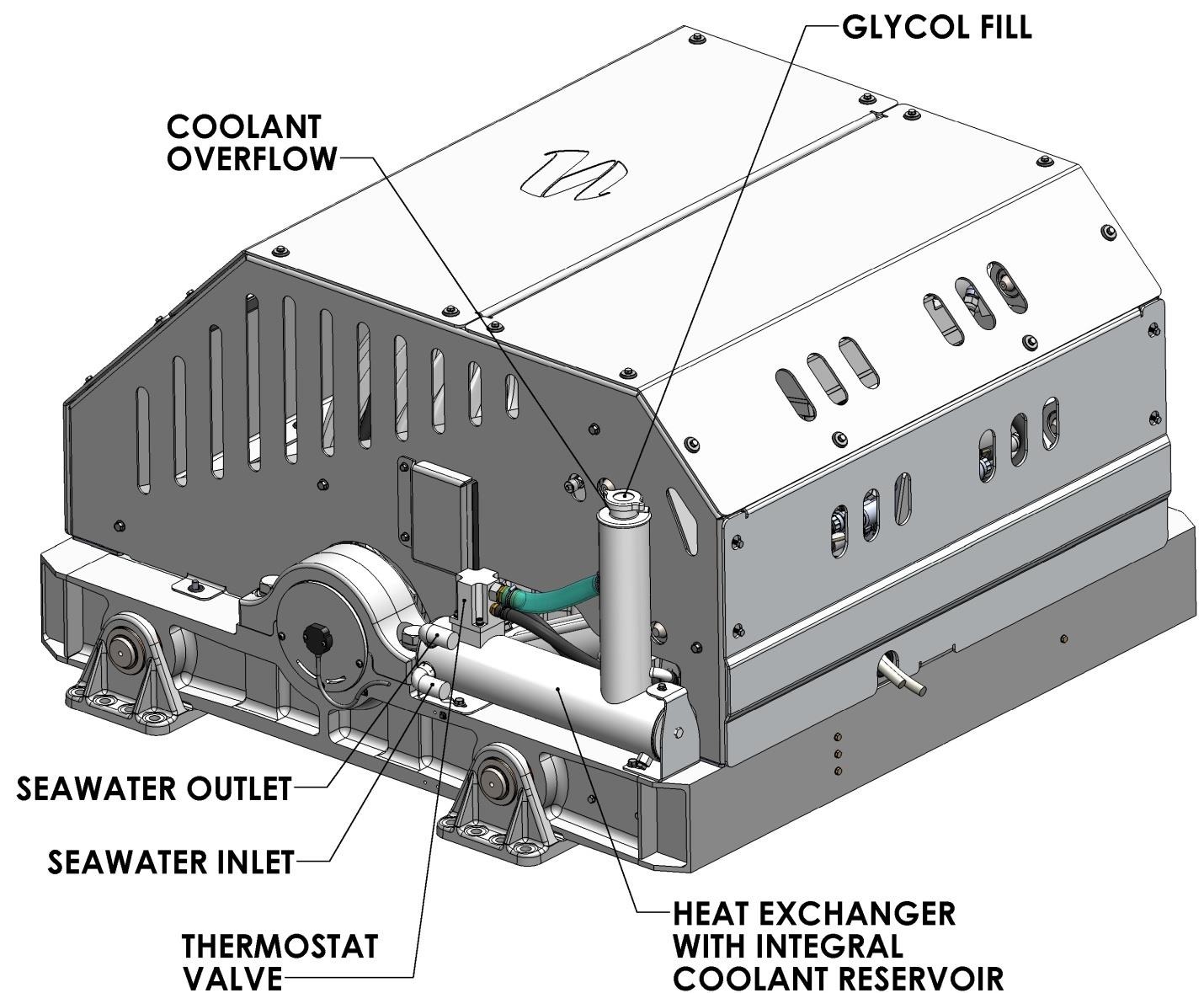Seakeeper 35 / 30HD Installation Manual (90268-7)
Precautions
- Installer is responsible for supplying a dedicated seawater pump and associated plumbing. Seawater connections on the heat exchanger mate with 1 in. (25.4 mm) hose.
- There is no need to disconnect hose from glycol pump except to replace the pump. In this case, provision will need to be made to catch draining glycol as plumbing is disconnected. Use caution to avoid breaking plastic hose connections on pump casing.
- An output is available from motor drive box to power and automatically control seawater pump. This pump must operate on 230 VAC single phase and consume less than 5 A. Pumps requiring other voltages or higher current can still be controlled by using this supply from motor drive to trigger an installer-supplied contactor, but a separate source of power must be provided.
- Maximum seawater pressure in heat exchanger is 20 psi (1.4 bar).
- Seawater flow requirement through heat exchanger is 10 GPM (38 LPM) minimum and 14 GPM (53 LPM) maximum under all operating conditions of the boat. When sizing seawater pump, installer should factor in losses for raw water plumbing. In addition to initial operation at dock, new Seakeeper installations should be checked to be within the flow requirements while vessel is at speed. Flows higher than 14 GPM (53 LPM) could affect heat exchanger life.
